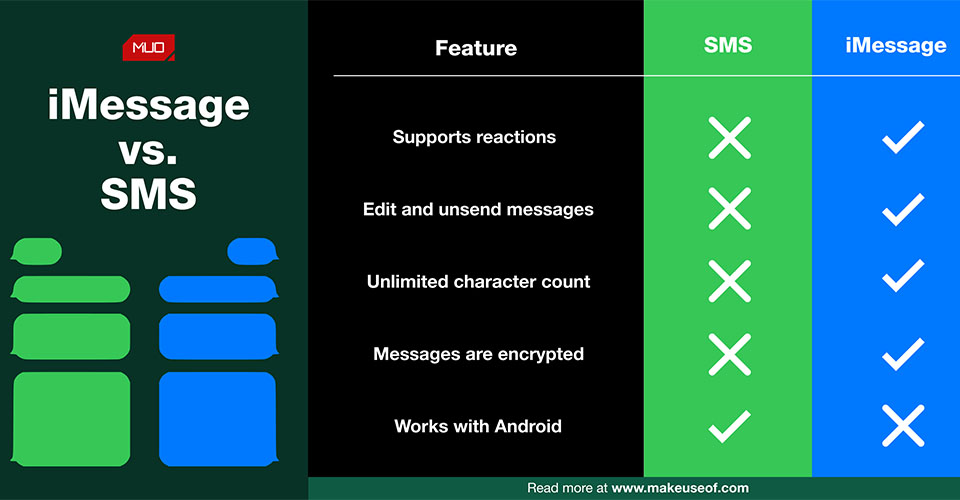In today’s world of instant communication, messaging apps have become an indispensable part of our lives. Among these apps, iMessage stands out as a popular choice for Apple device users. Its seamless integration within the Apple ecosystem and plethora of features make it a preferred communication tool. However, a common question arises: Is iMessage is as SMS? While they both serve the purpose of sending messages, iMessage and SMS are fundamentally different technologies. In this exclusive article, we delve deep into the intricacies of iMessage and SMS, shedding light on their unique characteristics, functionalities, and advantages.
Understanding SMS: The Foundation of Text Messaging

SMS, or Short Message Service, is the traditional text messaging protocol that has been around for decades. It’s a basic communication service supported by virtually all mobile phones, regardless of the operating system or carrier. SMS messages are typically limited to 160 characters and are sent over cellular networks.
-
Key Features of SMS:
- Text-based messaging
- Limited to 160 characters
- Sent over cellular networks
- Supported by all mobile phones
- No internet connection required
-
Advantages of SMS:
- Universality: Works across all mobile devices and carriers.
- Reliability: Generally delivers messages even with weak network signals.
- Simplicity: Easy to use and understand.
-
Disadvantages of SMS:
- Limited features: Primarily supports text-based messages.
- Cost: Carriers may charge per message or require a texting plan.
- Security: Messages are not end-to-end encrypted.
Exploring iMessage: Apple’s Messaging Powerhouse
iMessage is Apple’s proprietary messaging service available exclusively on Apple devices like iPhones, iPads, Macs, and Apple Watches. It utilizes both cellular data and Wi-Fi networks to send messages, offering a richer and more interactive messaging experience than traditional SMS.
-
Key Features of iMessage:
- Text, photo, video, and audio messaging
- Group chats
- Read receipts and typing indicators
- End-to-end encryption
- Integration with other Apple services
- Rich features like Memoji, Digital Touch, and effects
-
Advantages of iMessage:
- Feature-rich: Supports various media types, group chats, and interactive elements.
- Free to use: Messages are sent over Wi-Fi or cellular data without additional charges.
- Enhanced privacy: End-to-end encryption ensures secure communication.
- Seamless integration: Works seamlessly across Apple devices.
-
Disadvantages of iMessage:
- Limited to Apple devices: Cannot be used to communicate with non-Apple users.
- Requires an internet connection: Cannot send messages without Wi-Fi or cellular data.
Is iMessage is as SMS?: The Definitive Answer
The simple answer is: No, iMessage is not SMS. They are two distinct messaging technologies with different underlying protocols and capabilities.
- iMessage vs. SMS: Key Differences:
- Protocol: iMessage uses Apple’s proprietary protocol, while SMS uses the standard GSM protocol.
- Network: iMessage utilizes both cellular data and Wi-Fi, while SMS relies solely on cellular networks.
- Features: iMessage offers a wider range of features, including multimedia messaging, group chats, and interactive elements, compared to SMS’s basic text-based messaging.
- Security: iMessage provides end-to-end encryption, while SMS messages are not encrypted.
- Compatibility: iMessage is exclusive to Apple devices, whereas SMS is universally supported.
How Does iMessage Interact with SMS?
Although iMessage and SMS are different technologies, they can coexist within the Messages app on Apple devices. When you send a message to another Apple user, your device will automatically check if they have iMessage enabled. If they do, the message will be sent as an iMessage (indicated by a blue bubble). If they don’t, or if there’s no internet connection available, the message will be sent as a regular SMS (indicated by a green bubble).
Choosing the Right Messaging Service
The choice between iMessage and SMS ultimately depends on your needs and preferences.
-
Use iMessage when:
- Communicating with other Apple users
- You need to send multimedia messages or use interactive features
- Privacy and security are a priority
-
Use SMS when:
- Communicating with non-Apple users
- You have limited or no internet connectivity
- You only need to send basic text messages
FAQs:
- Can I use iMessage on Android or Windows devices? No, iMessage is exclusive to Apple devices and cannot be used on Android or Windows platforms.
- Can I send iMessages over Wi-Fi only? Yes, iMessage can be sent over Wi-Fi even if you don’t have cellular data connectivity.
- Are iMessages free to send? Yes, iMessages are free to send over Wi-Fi. However, if you’re using cellular data, standard data charges may apply.
- Can I recover deleted iMessages? If you have iCloud backups enabled, you may be able to recover deleted iMessages from your backups.
- How can I tell if a message was sent as an iMessage or SMS? iMessages appear in blue bubbles, while SMS messages appear in green bubbles in the Messages app.
Conclusion
While both iMessage and SMS serve the purpose of sending messages, they are fundamentally different technologies. iMessage, exclusive to Apple devices, offers a richer and more secure messaging experience, while SMS provides universal compatibility but with limited features. Understanding the distinctions between these two services empowers you to choose the right tool for your communication needs.
Remember, iMessage is not SMS, but they can work together harmoniously on your Apple device, ensuring you stay connected with everyone, regardless of their platform.
لا تعليق